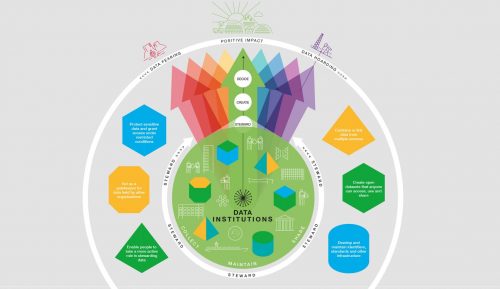Data diary: Linet Juma on how we can build more sustainable gender data systems in Kenya
Through our gender financing project, we are engaging with different gender-related data to track spending towards gender equality. Our Data Diaries series asks development experts why gender-related data matters to their work, how they engage with this data, and what improvements they would like to see to make this data more transparent.
This fourth Data Diary is by Linet Juma, consultant for the Gender Financing Project. In this blog, Linet shares her experiences, and those documented in the interviews for the project, on the need for more sustainable systems to generate and share better gender data.
The importance of gender data for better and more informed decision-making is not lost on organizations and movements that implement gender equality initiatives in Kenya. Multiple stakeholders, including government departments, feminist and women’s rights organizations (WROs), donors, and research institutions work to better collect, manage, share and use gender data relevant to their initiatives.
Despite this, throughout the 29 interviews I conducted with such gender equality stakeholders, they identified multiple barriers that make it difficult for them to access and use good quality, adequately disaggregated and timely gender data. Many report a lack of meaningful and accessible data, as well as a lack of internal financing and capacity to improve gender data publication. As a result, organizations, especially feminist and WROs, do not trust the collected data, which limits its use to inform programming from the national to the grassroots level.
Rethinking models of data access and collaboration
To maximize the benefits of gender data, there is a need to ensure that all implementers of gender equality initiatives have access to and use good quality and timely gender data. With gaps in the gender data collected and published by the National Statistics Office (NSO) in Kenya, particularly with the disaggregation, timeliness and completeness of data, most stakeholders turn to other sources or collect their own data. While these efforts help plug gender data gaps, they often cater only to the needs of the specific organization at the time and may not be useful for other stakeholders. Questions on data collection methodologies and cycles, data management, and gaps in data sharing and inaccessibility make this data largely unreliable for other stakeholders.
There is a need to rethink models of data access and collaboration to ensure sustainable gender data access and use. One potential solution is to adopt collaboration and data sharing models that centre data institutions in the gender equality space. Data institutions can take the form of data clubs, trusts, cooperatives or commons and could have various key roles, as indicated in the image from the Open Data Institute below.
Gender data stewardship

Many gender equality stakeholders in Kenya grapple with the two extremes of data hoarding or data fearing. With the former, organizations hoard data as they are concerned about the potential ‘negative implications’ of the data, such as reducing data uptake and potential impact and increasing the risk of data breaches among others. With the latter, organizations decline to share or use data due to a lack of trust in how it’s collected and/or managed. Responsible data stewardship by gender data institutions can address these two issues by collecting, maintaining and sharing data in ways that national and grassroots stakeholders can then use to improve gender equality in Kenya.
A fundamental gap in the current gender data landscape in Kenya is the lack of access to mainstream gender data sources, particularly by grassroots organizations and WROs, which drive the implementation of gender equality initiatives. While a few interviewees pointed out valuable initiatives helping to bridge this gap (for example, 28 Too Many on Female Genital Mutilation, Equal Measures 2030, and the Gender Data Dashboard run by GROOTS Kenya), gender data institutions could play a key role in answering questions around these initiatives. More specifically, data institutions could help answer questions on issues of longevity, the lack of granularity/disaggregation and completeness of shared data, and stakeholders’ inability to access and use data from these kinds of initiatives to inform their gender equality work.
Activities of gender data institutions could include:
- outreach to national and grassroots gender equality stakeholders;
- translation of collected ‘digital’ gender data into analogue formats more accessible and easily interpreted by grassroots organizations, and;
- making linkages between datasets and curated data interpretations for different stakeholders to support their work.
In addition, gender data institutions could provide capacity building for key stakeholders through training and/or mentorship on gender data. This would build the capacities of stakeholders in the long term to collect, publish and use gender data, and is critical in ensuring sustainable access and use of gender data.
Going forward, investments into the creation and/or restructuring of gender data institutions could provide the solution to the current status of gender data in Kenya. These could reshape the existing models around gender data characterised by inadequate collection, sharing and use, and increase opportunities for more evidence informed gender equality initiatives.
The Gender Financing Project is funded by and in partnership with Friends of Publish What You Fund, and receives support from Plan International USA and Save the Children US.

